The year 2022 gave us numerous challenges and a host of learning opportunities along with it. With challenge and obstacles often comes growth and a framework for moving forward, ready to tackle the next round of difficulties. The return to work and the struggle to get back to some sort of “normalcy” has not been easy.
February is Plant the Seeds of Greatness month, and we believe there is much to be learned from past experiences, whether good or bad.
As we reflected on the events that evolved last year, as we climbed out of the pandemic, and the subsequent responses, we recognized an overarching theme of transformation. Leaders are still being pushed and pulled across businesses and communities searching for how to align their organization with the changes that are occurring. They must constantly take actions that support short-term needs while still mindful of longer-term strategic goals.
This hotbed of activity and critical learning has morphed into a renewed focus for leaders and organizations hoping to embrace the best of the crises and apply it to their efforts to boost business in 2023 and beyond.
No matter what role you play or where that role is, there are critical elements of leadership that have now evolved and must be adopted by anyone who hopes to be a stronger and more successful leader.
Below are the top trends or directions we see leadership evolving as they seek to respond to future disruptions proactively.
1. Incorporate a Transformational Mindset
Let’s begin with getting our minds in a place of transformation. No progress comes if we are reluctant to face the mistakes and weaknesses uncovered from past years. Failures and missteps can and will happen, but what comes after those missteps? What can we learn and how can we improve?
The lessons learned provide the opportunity to shift or pivot our approaches to our businesses, teams, and strategies for the year ahead. We must constantly learn, adapt, and accelerate many things to keep our businesses running and competitive.
Digital transformation has been a tremendous asset these past couple years. This digitalization of the workforce is one of those significant efforts that are imperative for moving forward and staying competitive. That takes a transformational mindset to rethink operating models and other needs of the business.

2. Shifting Organizational Structure
The hierarchy, of the past, is giving way to a flatter, or more horizontal, organizational structure. There are advantages and disadvantages of the flattening structure. One advantage is quicker response times with management for questions, information, decisions, and updates. Another advantage of the flatter structure is improved communication, as there are not as many levels for the information to travel. There will also be more collaboration with teams working side-by-side each other with less control by management.
Leaders will be required to work in more collaborative ways, as they oversee more subordinates. They will have to engage their teams to work together from different areas in the organization, with less control and oversight on individuals. They will depend more on their team leads to help manage and hold accountable the individual team members.
3. Remain Agile
You can’t build a resilient organization if you aren’t agile. A leader must learn to be nimble and flex when the circumstances require. When we are mired in analysis and red tape, we fail to make a timely decision and take action at optimal moments.
As leaders today, we must assume change and disruption are standard. With that assumption, we must exercise our agility muscle just like any other. Getting comfortable with ambiguity and risk can go a long way as we embrace a leadership style that can rapidly course correct as circumstances fluctuate.
This agility becomes invaluable as we meet the evolution of innovation and competition that’s yet to come.
4. Redefine/Reinforce Culture
A well-defined and nurtured culture enhances the odds that a business or community can rebound from massive change or disruption.
Gender equality has proven to enhance productivity and results. Leadership training and cultivation of a its female resource is something every company should be considering in 2023.
A more diverse culture is also something that has become very important in organizations. Company leadership and management are opening its doors to a more diverse make up of its members, however that process is still very slow.
According to Kaplan Mobray, Millennials and Diversity: Cultivating a Culture of Inclusion,” millennials are more inclusive in nature, seeing diversity as more than just race, and including varying experiences, backgrounds, and perspectives.
One other trend in culture is shifting the focus to training more of the soft skills of leaders and employees. Soft skills include emotional intelligence, empathy, creativity, adaptability. This type of training enhances leadership potential and satisfaction in the workforce.
Taking measures now to examine the culture and the core values it’s built from is a significant first step. Look at what employees and other leaders value and listen to their feedback. From there identify potential new anchors and defining characteristics that underscore the desired culture.
When reviewing the culture, see if what you have defined marries with your employees’ behaviors and actions. If culture and experience do not match, there is work to be done.
Don’t forget to speak with your employees or those you are leading. Listen to what they are saying about the culture and whether it mirrors the intent. Look for their input on improvements and put a plan in place. Share progress and commit to doing better.

5. Focus on Trust
The past few years have challenged our trust. The conflicting messages, numerous breakdowns in supply chains, massive confusion, and chaos of operational model shifts, are resulting in a significant loss in confidence by employees and customers.
The most successful leaders will ensure a renewed focus on trust, both inside and outside their domain areas as part of their transformation strategy. Seeking tactics that reengage with critical stakeholders and build confidence in supporting and responding to business needs will drive many key decisions in the coming year.
Placing a focus on rebuilding and strengthening trust is vital to the investment of time, attention, and resources. Any attempt to advance the organization without trust as a core pillar would be a wasted effort.
6. Flexible Working Arrangements
What we have learned from the past crisis is that remote working is not only possible, but also sustainable. Requiring strict office hours may be a thing of the past. Workers like to have flexibility.
Evaluating your current model of office versus remote work and reviewing how to enhance or drastically improve that experience becomes a priority if we’re to keep the lights on.
Harnessing all the technological options we now have available, as we have transformed kitchen tables into desks, spare bedrooms into new offices, cubby hole zoom meeting rooms, and working “out of town” a possibility. Organizations have come to realize that hybrid working is something employees desire and that they have become important to retainment.
Remote working, or the choice to do so, offers a work-life blend that many have not experienced before. Offering remote working will play a huge role in the hiring new employees, retaining the workforce, and sustaining the organization at large.

7. Improve the Employee Experience
It’s time to reassess the talent pool and support professional development and growth. Employees may not progress in the same manner as they once did and will likely require new attention that reinforces the importance placed on learning and development.
As millennials and Gen Zers continue to enter the workforce, more innovative and creative learning objectives will be required to attract and retain talent. Both millennials and Gen Zers won’t hesitate to leave jobs seeking something that aligns with their values. They prefer to work on their own terms with high compensation, an opportunity for work-life balance, and the possibility of career development and advancement.
Finally, leaders will need to review the available benefits and perks for employees. Those little things that made coming into the office a bit more tolerable may no longer apply. Free lunch, happy hours, or gyms are now useless. How can we replace such perks with new employee benefits that are more meaningful in the new world? The same goes for the formal employee benefits within an employment package. Where can we align those with a new workforce model to make up for anything lost?
8. Reinvent the Customer Experience
Lastly, we need to rethink our customer experience. From initial engagement to a long-term client, we must examine every touchpoint and response. With the consumerization of business, the dynamic has shifted.
Leaders need to look at how interaction is different. Does the in-person support disappear entirely, or has it simply been altered to accommodate a reduced interaction? How can we make it seamless and pain-free while potentially improving on the experience they had before? What are we hearing from customers, and how are they driving response?
We must review and assess every channel of interaction to rebuild a new experience potentially. That covers social media, email, website, text, phone, and in-person interactions, and it means thinking more digitally across mobile, desktop, and tablets.
The entire customer experience needs upgrading, and it must be consistent, seamless, and timely.
These are just some of the primary lessons we’ve seen born from the crises of 2020 and the pathway back to a workforce that has returned to work. The most successful leaders are those that are more intuitive and embrace change in all its forms. They bring new ideas to the table and welcome disruption knowing from it comes more remarkable and meaningful transformation.
Article updated February 1, 2023
Diversity and Inclusion, Trends
